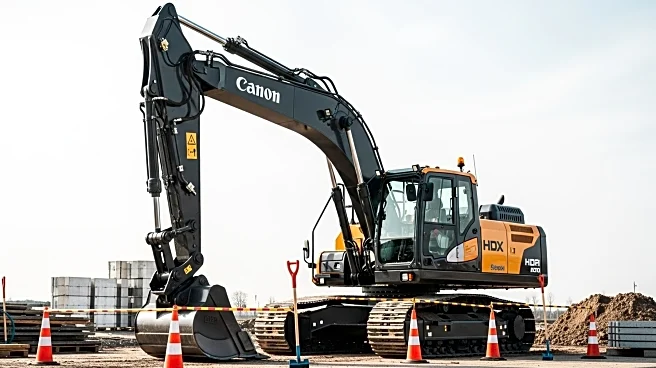What's Happening?
Komatsu has launched the PC950-11 hydraulic excavator in Australia and New Zealand, designed to enhance productivity and sustainability in quarry and mining operations. The excavator offers up to 48% greater productivity while using up to 40% less fuel than its predecessor, addressing cost and emission concerns. It features increased dig forces, greater drawbar pull, and superior durability, tailored for demanding environments. Safety and skilled labor shortages are addressed with features like the KomVision 360-degree camera system and hydraulic access stairway. The cab provides a quieter, more comfortable workspace, aiming to retain skilled operators and reduce fatigue.
Why It's Important?
The introduction of the PC950-11 excavator is significant for the mining industry, offering a solution to reduce operational costs and environmental impact. As fuel costs and sustainability pressures rise, the excavator's efficiency and reduced emissions are crucial for operators. The focus on safety and operator comfort addresses industry challenges, potentially improving workforce retention and productivity. Komatsu's investment in durable and efficient machinery reflects broader industry trends towards automation and sustainability, aligning with global efforts to reduce carbon footprints and enhance operational efficiency.
What's Next?
Komatsu's PC950-11 is expected to set a new benchmark for large-scale earthmoving operations in Australia and New Zealand. As the industry continues to prioritize sustainability, further innovations in machinery design and technology are anticipated. The focus on safety and operator comfort may lead to increased adoption of similar features across the industry, influencing future equipment standards. Komatsu's commitment to addressing skilled labor shortages through improved working conditions could inspire other manufacturers to follow suit, potentially transforming workforce dynamics in the mining sector.
Beyond the Headlines
The launch of the PC950-11 may have implications for the global mining industry, influencing equipment design standards and sustainability practices. The emphasis on operator safety and comfort could lead to cultural shifts within the industry, prioritizing worker well-being alongside productivity. As technology continues to evolve, ethical considerations regarding automation and its impact on employment may arise, prompting discussions on the balance between technological advancement and workforce preservation.










